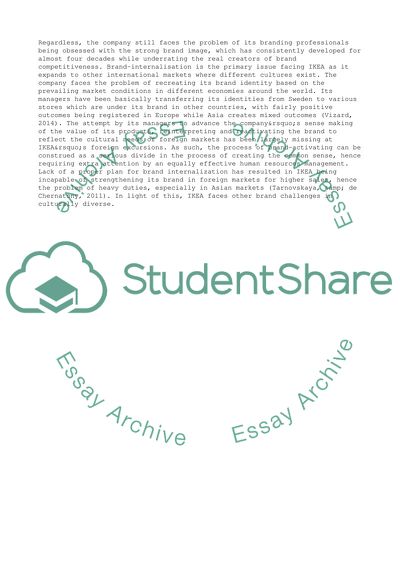Cite this document
(“IKEA Challenges and HR Solutions Case Study Example | Topics and Well Written Essays - 1750 words”, n.d.)
IKEA Challenges and HR Solutions Case Study Example | Topics and Well Written Essays - 1750 words. Retrieved from https://studentshare.org/management/1682767-internalising-a-brand-across-cultures-the-case-of-ikea
IKEA Challenges and HR Solutions Case Study Example | Topics and Well Written Essays - 1750 words. Retrieved from https://studentshare.org/management/1682767-internalising-a-brand-across-cultures-the-case-of-ikea
(IKEA Challenges and HR Solutions Case Study Example | Topics and Well Written Essays - 1750 Words)
IKEA Challenges and HR Solutions Case Study Example | Topics and Well Written Essays - 1750 Words. https://studentshare.org/management/1682767-internalising-a-brand-across-cultures-the-case-of-ikea.
IKEA Challenges and HR Solutions Case Study Example | Topics and Well Written Essays - 1750 Words. https://studentshare.org/management/1682767-internalising-a-brand-across-cultures-the-case-of-ikea.
“IKEA Challenges and HR Solutions Case Study Example | Topics and Well Written Essays - 1750 Words”, n.d. https://studentshare.org/management/1682767-internalising-a-brand-across-cultures-the-case-of-ikea.


